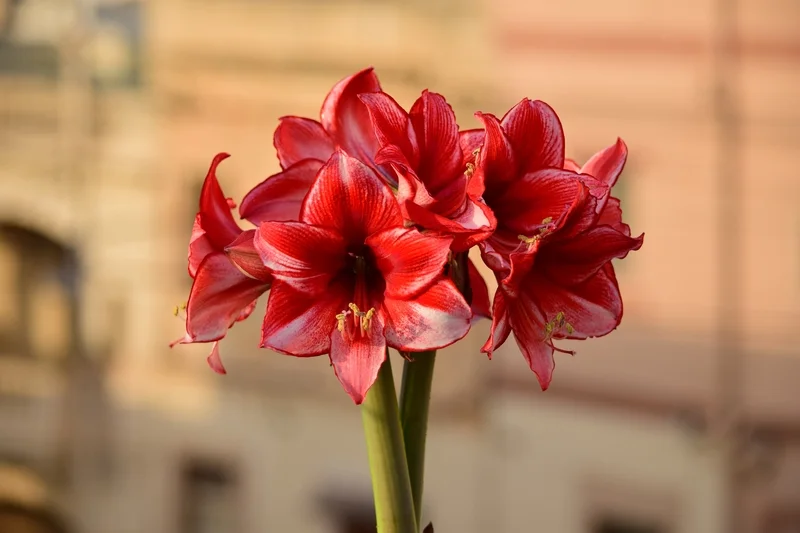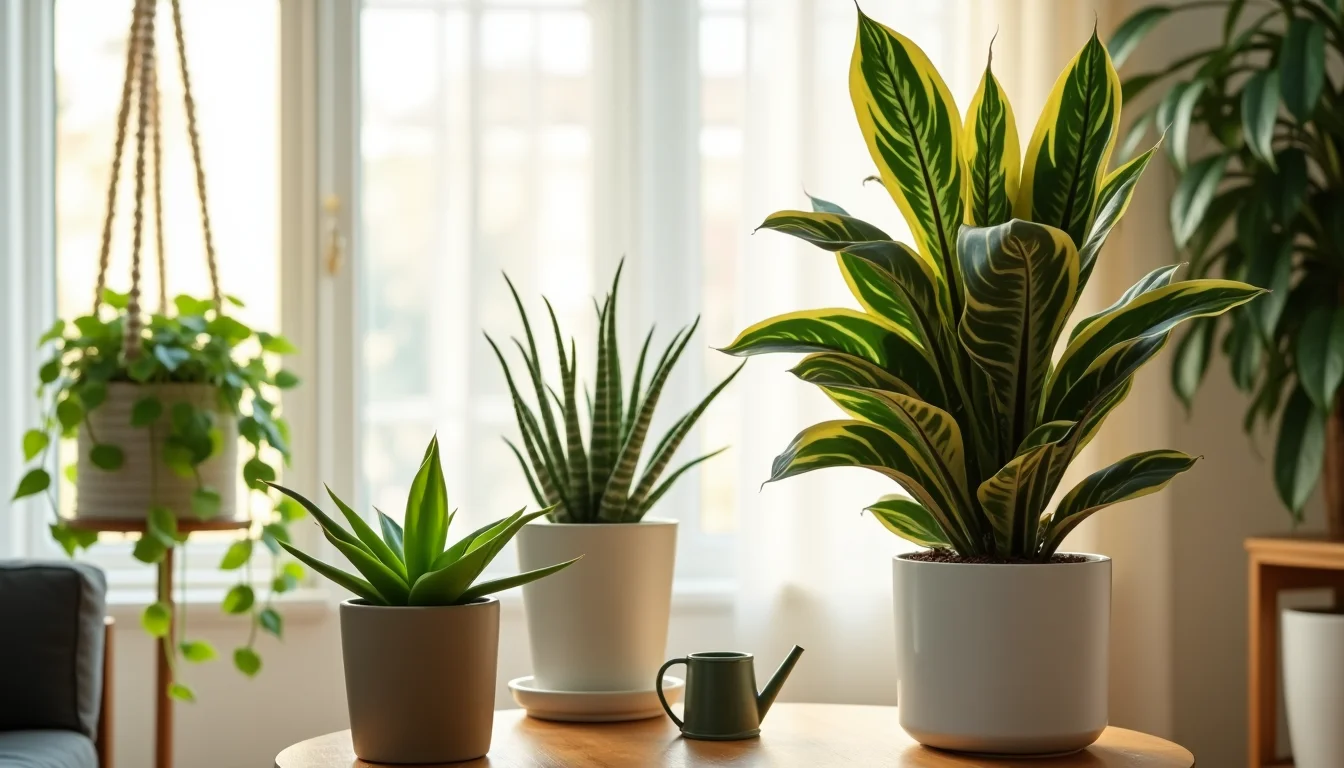Waxed amaryllis bulbs are the perfect solution to holiday decorating if you want beautiful blooms without any fuss. These specially prepared bulbs bloom on their own, without the need for planting, watering, or any gardening experience.
The bulbs’ protective coating comes in red or white wax and features a convenient coil stand, making the holiday display elegant and straightforward. They thrive in rooms with temperatures of at least 70 degrees Fahrenheit and produce stunning blooms within five to six weeks.
You can bring these elegant winter flowers into your home starting at $25.50, while some options are on sale for $19.50. A “Surprise Package” option offers 10 random bulbs at a discounted price, perfect for those who enjoy variety.
What Are Waxed Amaryllis Bulbs?

The captivating waxed amaryllis bulbs are state-of-the-art garden creations that originated in Holland. These decorative bulbs have been popular in Europe and recently made their way to American shores. They represent an exciting new chapter in indoor winter gardening.
How do they differ from regular amaryllis bulbs?
These waxed bulbs are pretty different from the traditional ones. The growers remove all roots before starting the waxing process. The bulbs undergo special heat treatments that stimulate sprouting, allowing them to produce blooms within three to six weeks after planting.
The most significant change is in how long they last. Regular amaryllis bulbs can bloom year after year with reasonable care, while waxed ones give you just one spectacular show. But their incredible convenience and beauty make up for this shorter lifespan.
The waxed varieties usually grow shorter and sturdier than their traditional cousins. Each bulb typically sends up one or two flower stalks and creates up to six beautiful blooms.
Why don’t they need soil or water?

The sort of thing I love about these self-sufficient bulbs is the science behind them. Each waxed amaryllis bulb stores all the water and nutrients it needs for its entire blooming cycle. The wax coating does something clever – it locks in moisture, keeping the bulb hydrated.
This works because amaryllis bulbs are naturally tough.
They can go without water or soil for long periods. The wax simply helps them utilise this natural ability more effectively.
These bulbs know how to utilise their stored food effectively. Bigger bulbs perform better, which is why quality growers focus on producing large ones.
Types of wax coatings and colours

You’ll find these waxed bulbs in many beautiful finishes. Dutch growers create them in lots of colours and styles that match different holidays and seasons. Here are some popular choices:
- Metallic coatings that shine beautifully
- Sparkly glitter finishes for extra festivity
- Elegant marbled patterns
- Holiday-themed colors like Christmas reds
The flowers bloom in classic colors, including red, white, pink, and eye-catching bicolors. Red varieties show up first in the season, followed by white and white/red combinations later on.
Most waxed bulbs come with a handy wire stand or coil at the bottom, which helps keep those gorgeous top-heavy blooms steady as they grow.
How to Care for Waxed Amaryllis Bulbs
Waxed amaryllis bulbs make fantastic holiday gifts because they need little care yet produce stunning blooms. These self-sufficient beauties will thrive with minimal attention. Let me share what you need to know about your waxed amaryllis.
Ideal room temperature and lighting
Your wax amaryllis bulbs need the right spot to grow well. Room temperatures should stay between 60-75°F (15-24°C). This range creates the perfect environment without damaging the wax coating.
These bulbs love bright, indirect sunlight. You should never place them in direct sunlight as it might melt the wax and damage the plant. A bright windowsill with filtered light works best in my experience.
The plant will naturally grow toward light, so turn your bulb every few days. This simple habit will help it grow straight instead of leaning to one side. Your blooming plant’s final appearance will look much better this way.
How long they take them to bloom
These winter wonders need time to show their beauty! Each waxed amaryllis follows its schedule. You may see growth start anywhere from 4 to 12 weeks after receiving your bulb. The timing varies based on the amaryllis variety and your home’s conditions.
The blooming process happens in stages. Stems emerge and develop throughout 4 to 5 weeks. Each stem then produces multiple flowers during the next 3-4 weeks. Most bulbs give you at least two stems.
Your bulb should bloom approximately 8-9 weeks after purchase, although some types may take 10-12 weeks to bloom. The wait pays off because these magnificent flowers last several weeks.
Waxed Amaryllis Bulbs Tipping Over: Signs of Healthy Growth and Fixes
Don’t worry if your new waxed amaryllis doesn’t show any growth at first. This dormant phase happens naturally. Some bulbs arrive with small buds, while others show no signs of life.
The first sign will be a stem pushing through the top of the bulb. Growth happens faster during peak periods – sometimes inches per day. A healthy stem should feel firm and grow straight, especially if you’ve been rotating it.
Brown tips on your amaryllis bulb shouldn’t cause concern. This usually occurs due to natural ageing or shipping and won’t stop the blooming. Fresh growth will replace these brown spots with healthy tissue.
What to avoid during blooming
Taking care of waxed amaryllis means knowing what not to do. Never water a waxed bulb. The wax retains moisture, and adding water may cause rot.
Keep your bulb away from ripening fruit. Fruit releases ethylene gas that can harm amaryllis bulbs. The bulbs also need protection from drafts, extreme temperatures, and heating vents that could dry them out or melt the wax.
Leave the wax coating alone while your bulb blooms. This wax creates a vital ecosystem. You can think about removing it after flowering only if you want to try replanting for next season.
Creative Ways to Display Your Bulbs
Waxed amaryllis bulbs can turn ordinary spaces into magical winter wonderlands without much effort. These self-sufficient flowering bulbs are beautiful not just because of their blooms, but also in the many ways you can display them in your home.
Using them in holiday centrepieces
Your holiday table arrangements will look stunning with waxed amaryllis bulbs. You can create an eye-catching centrepiece by clustering several bulbs together and weaving battery-operated fairy lights around their waxed bases. The twinkling display captures the magic of the season perfectly. Note that you can secure the bulbs by hot-glueing their bases to small tart pans lined with pebbles.
These waxed beauties stand out from traditional potted plants, as you can place them directly in decorative containers. Set them in rustic wooden boxes filled with evergreen boughs that look perfect on mantles or dining tables. Paperwhites look festive when placed in glass vessels filled with cranberries.
Pairing with other winter plants
Seasonal greenery makes waxed amaryllis bulbs look striking. Cedar, fir, pine, and juniper make excellent companions because they keep their moisture and needles even in warm indoor temperatures. The amaryllis’s vibrant reds and whites blend beautifully with deep greens.
Natural elements like pinecones, holly berries, or mistletoe can add a charming touch to your arrangements. These combinations create texture and seasonal appeal that make the amaryllis’s dramatic blooms stand out even more.
Decorating with stands and holders
Most waxed amaryllis bulbs come with coil stands that allow you to place them anywhere without the need for extra support. Creative display options can add your personal touch to the décor.
Macramé holders provide a stylish way to showcase these bulbs, allowing you to hang them as unique decorative elements. You can create visual interest by placing your amaryllis in unexpected spots above a kitchen sink or an entryway.
A single bulb on a rustic wood slice with holly looks elegant. You can also display several bulbs on an elevated cake stand to create an instant sense of sophistication.
Troubleshooting Common Issues
Beautiful winter-blooming waxed amaryllis bulbs can face challenges despite their low-maintenance nature.
Here’s how to tackle common problems you might face with these plants.
Bulb not blooming
Your waxed amaryllis might take its time showing growth signs. These bulbs follow their schedule and need 4 to 12 weeks to wake up. Each variety responds differently based on your home’s environment.
Poor light exposure and cold temperatures often delay the blooming process. Your bulb needs a warm spot (65-75°F) with bright, indirect sunlight. Cold rooms slow down flowering, while too much heat can melt the wax coating.
Wax cracking or melting
Small cracks appearing in your bulb’s wax coating shouldn’t cause alarm. These surface changes won’t stop your bulb from growing or blooming. Bulb producers confirm that waxed amaryllis plants thrive despite these cosmetic issues.
The wax stays intact when you keep your bulb away from radiators, fireplaces, and direct sunlight. A temperature range of 65-75°F is optimal for protecting the wax while promoting growth.
Waxed Amaryllis Bulbs Tipping Over: Causes and Easy Fixes
Full blooms make amaryllis flowers top-heavy, and the whole bulb might tip. This happens because these bulbs root slowly, making them less stable than regular potted plants.
The metal stand or coil attached to waxed bulbs helps prevent tipping. You can also place your bulb in a heavy decorative container with a broad base to balance the flower’s weight. A strategic position against other decorative items provides extra support.
Mould or odour concerns
Fuzzy growth or odd smells on your waxed amaryllis point to potential rot issues. A rotting basal plate (bulb bottom) usually means the plant won’t survive.
Mild mould on new bulbs might be salvageable. Remove the wax carefully, trim affected areas, and treat with cinnamon as a natural fungicide. Let the bulb dry completely afterwards. Bulbs showing extensive mould or unpleasant odours need replacement.
Conclusion: Waxed Amaryllis Bulbs
Waxed amaryllis bulbs shine as nature’s gift to people who love beautiful blooms but lack a green thumb. These remarkable Dutch innovations need no watering, soil, or gardening skills. No other flowering plant blooms this magnificently with zero maintenance.
These self-sufficient beauties solve holiday decorating challenges when life gets busy. Their stunning flowers appear 5-6 weeks after purchase, which aligns perfectly with winter celebrations. The wax colours and flower types match any décor style – from traditional red blooms for Christmas to elegant whites for winter weddings.
Traditional amaryllis bulbs need years of care to rebloom, but their waxed counterparts deliver a spectacular show without demands. They won’t bloom again, yet their convenience and beauty during that single flowering cycle justify the cost. The sort of thing I love is their versatility – they work as standalone decorations or blend into elaborate holiday centrepieces.
Without doubt, proper placement leads to success with waxed amaryllis. Please keep them in warm rooms (60-75°F), away from direct sunlight, heating vents, and ripening fruit. A stem grows straight when you rotate the plant every few days. The included coil stands prevent tipping once those magnificent blooms appear.
Delayed blooming or minor wax cracks shouldn’t cause alarm. These resilient plants overcome minor problems on their own. Extensive mould or unpleasant odours signal that the bulb might not survive – this remains the only serious concern.
A waxed amaryllis bulb brightens your home during the winter months with elegance and ease. Their stunning blooms and carefree nature add delight to any winter wonderland you create.


















